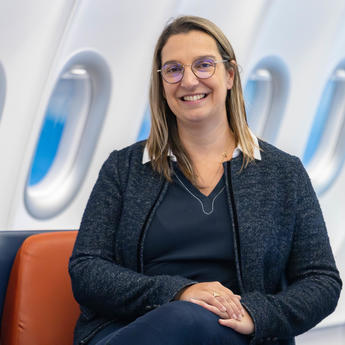Dedicated to raising the safety awareness
The Aviation Safety Centre is dedicated to raising the aviation safety awareness of all Airbus Helicopters employees based in Marignane, France. The centre is divided into several zones, four of which host the digital modules that form the core of the system. These digital modules cover four major themes for Aviation Safety: air accidents, organisational and human factors, FODs (Foreign Object Damage, foreign bodies that can cause damage) and risk management.
Our objective is that all employees, including apprentices, temporary workers and on-site subcontractors in Marignane – about 10,000 people – are being trained in the Aviation Safety Centre. We also aim to host customers and suppliers at the centre to further demonstrate Airbus Helicopters’ commitment to a safe flying culture.
Ensuring the highest level of safety

Air Accidents
Module 1
Sharing the lessons learned following several accident investigations, as well as raising awareness of the management of major technical-operational incidents and the consequences of a helicopter accident for the company, is a cornerstone for improving aviation safety culture.

Organisational and Human Factors
Module 2
Human components (individual and collective behaviours, for example), organisational components (management, procedures, etc.), situational components (environment, working conditions, etc.), and technical components (constraints, technical means, etc.) have an influence on everyone’s daily job and therefore on aviation safety.

FOD (Foreign Object Debris/Damage)
Module 3
The risks and damage caused by FOD, the prevention of damage that can be caused by lost objects, and objects that can subsequently become factors in accidents are at the heart of this module, which has two goals: to raise awareness of FOD and associated risks, and to raise awareness of solutions to prevent FOD.

Risk Management
Module 4
It is vital for any organisation or company, whatever its field of activity, to implement a risk prevention and management programme. The aim of this programme is to constantly anticipate and take into consideration all the risks that its projects or activities are likely to generate. The goal is to explain what risk management is and what its objectives are: to identify all the factors that could constitute a danger within the entity, to identify the consequences linked to these dangers, to implement preventive or corrective actions within the entity in order to mitigate risks, to monitor these actions and to analyse their effects on aviation safety.
The latest in safety
In the spotlight
-

Stories Safety
Aviation safety trends show need for continued vigilance
A Statistical Analysis of Commercial Aviation Accidents 1958-2024, Airbus' annual comprehensive review of commercial aviation safety, reveals both progress and concerns in the industry's safety… -

Stories Helicopters
How Airbus is training the current and next generation of helicopter pilots and…
-

Stories Safety
Airspeed information, whatever the conditions
-

Stories Safety
Continuously improving the safety of our aircraft
-

Stories Safety
How to make takeoff safer

